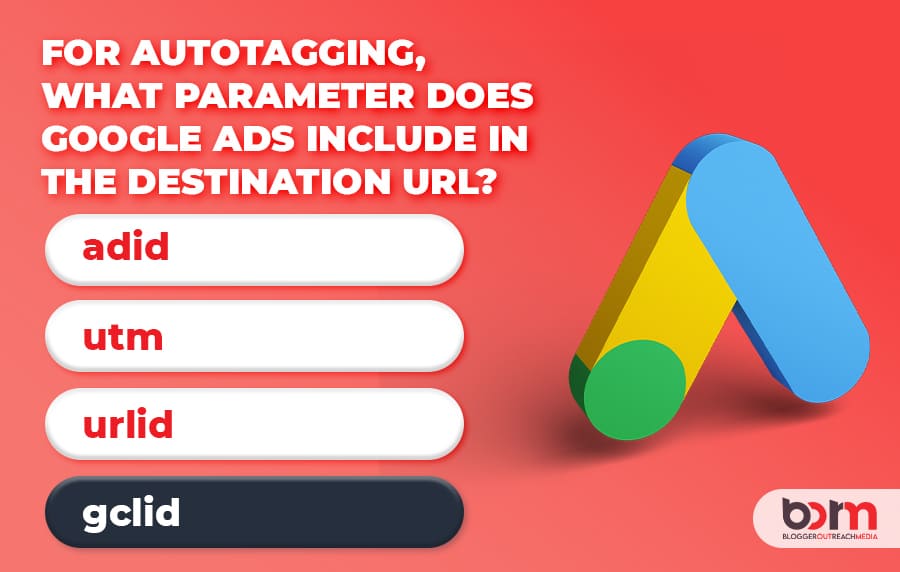Keep reading till the end to find out more information on the same!
About Auto-tagging
Google AutoTagging is a feature that adds a parameter to the URLs to help a user in tracking offline conversions. It then reports on the performance, by making use of website tracking programs like Google Analytics.
Steps To Turn On The Google AutoTagging
Here is a list of steps that you need to follow to turn on Google Autotagging:
- First, you would need to sign into your Google Ads account.
- After that, you will see that a menu has appeared on the left. There you would need to click on “Settings”.
- Go to the account settings next, and then to the tab that is located above the table.
- Then click the section labeled AutoTagging.
- To enable auto-tagging, you can select the Tag that the people click through your provided ad.
- Then click on save.
Tip: If you want to disable the auto tag, then uncheck the checkbox which is located right next to the "tag the URL which people might click..." option.
Benefits Of Utilizing Google Ads
Here is a list of the following benefits that optimizing Google Ads does for your business:
1. Optimization Of The Ranking Of the Website
There’s an immense need to learn about the various tactics related to SEO to improve the ranking of any site. You need to make sure that you are using the important keywords.
With the aid of the Google Search Console and Analytics, you will be able to identify the correct keywords. This is effectively going to improve the visibility of your site.
With just the correct form of keyword strategy, you are going to be able to increase the conversion which would lead to the success of both the web traffic and your business.
2. Getting To Know About The Clients
After switching up the geographical location in the Google Analytics software, you are going to get the appropriate information about the customers which is effectively going to help you in strategizing region-specific marketing tactics.
This is also going to help you set up the goals for your business.
This in turn would also let you determine the probable growth of your business in specific regions.
For instance, if you can map out the gaps then you can cater your business around serving/filling those unattended gaps.
3. Setting And Tracking Of Goals
After you have already gained enough knowledge about the potential customers that you might have, you can accurately set up personalized marketing goals that are personalized.
Google Analytics also features a certain amount of goals which are essentially set-up features that can vastly improve a business.
You can also choose from a business to assign a monetary value to some of the specific actions and then measure their viability through the several available tools of Google Analytics.
4. Segmenting The Visitors Effectively
Google Analytics enables a user to measure the success of the campaigns of their SEO. It also allows one to monitor the number of users visiting, their location, and referral paths.
Segmenting like this helps in getting to know the users and then aids in targeting them effectively. One could even consider adding even more value by personalizing the set campaigns.
Tip: If you missed out on my answer for autotagging, what parameter do Google ads include in the destination URL, then you can go back and give it a read.
Google Autotagging V.S Manual Tagging
Google Auto-Tagging is mainly used for Google Adwords. It is best to adopt this method if you are a user of Google Analytics.
Implementation of this would ensure that both Analytics and Adwords accounts get linked. This lets Google tag everything automatically and a user won’t need to go through any form of extra effort or any sort of manual tracking and tagging.
Manual tagging, on the other hand, is when a user manually tags link tracking parameters to the web links.
If you are a person who is dealing with a lot of links at a single time, then it would only be best to make use of automated tagging to avoid any errors from happening.
FAQs
Here is a list of some of the frequently asked questions regarding Google Autotagging:
- Should I enable Autotagging in Google Ads?
A: If you make use of Google Analytics and Adwords then your best option is going to be utilizing autotagging. This is because there is no use of UTMs for tracking of performances of campaigns.
However, you still need to know that by using this approach your data is going to be piled up and stored in Google Analytics.
- Does tagging increase SEO?
A: Tags and Categories are not that essential for SEO. Still, to some extent, they affect the other elements that affect the rankings on a search engine. For this reason, it can also be said that auto-tagging is essential for SEO.
- What is Auto-tagging software?
A: The AI auto tagging software tags the images automatically all based on the objects that are in the image. It is an AI-driven technology that searches for relevant keywords and then adds them in the form of tags to every image that is imported into a website’s content library.
To Wrap It Up!
That was all for information regarding autotagging, What parameters do Google ads include in the destination URL? Thank you for reading up till here. I hope you found the information useful.
Read Also
- Which Default Traffic Source Dimensions Does Google Analytics Report For Each Website Visitor?
- Which Three Campaign Parameters Are Recommended To Manually Track Campaigns




